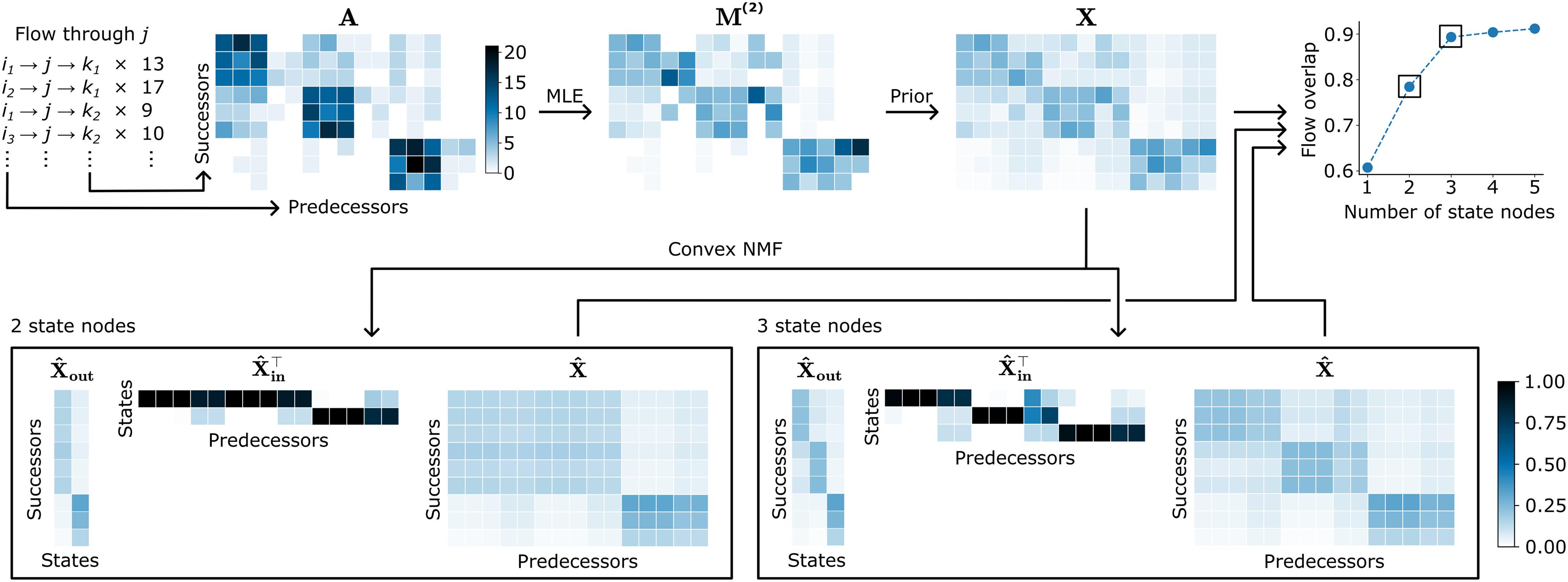记忆动力学的简明网络模型揭示了路径数据中可解释的模式
IF 12.5
1区 综合性期刊
Q1 MULTIDISCIPLINARY SCIENCES
引用次数: 0
摘要
网络方法通过将间接相互作用建模为随机游走来捕获复杂系统跨尺度的结构和动力学之间的相互作用。然而,来自现实世界系统的路径数据经常表现出一阶马尔可夫模型无法捕捉的记忆效应。尽管高阶马尔可夫模型可以捕捉到这些效应,但它们的规模增长很快,需要大量的数据,这使得它们在覆盖不均匀的系统中容易出现某些部分过拟合而其他部分欠拟合的情况。为了解决这一挑战,我们通过在一阶和二阶马尔可夫模型之间进行插值,从路径数据构建了简洁的网络。我们通过创建捕获突出二阶效应的状态节点和提出平衡模型大小和质量的透明度量来优先考虑简单性和可解释性。我们的简明网络揭示了合成系统和现实系统中的大规模记忆模式,同时比完整的二阶模型简单得多。本文章由计算机程序翻译,如有差异,请以英文原文为准。

Concise network models of memory dynamics reveal explainable patterns in path data
Network methods capture the interplay between structure and dynamics of complex systems across scales by modeling indirect interactions as random walks. However, path data from real-world systems frequently exhibit memory effects that this first-order Markov model fails to capture. Although higher-order Markov models can capture these effects, they grow rapidly in size and require large amounts of data, making them prone to overfitting some parts and underfitting others in systems with uneven coverage. To address this challenge, we construct concise networks from path data by interpolating between first-order and second-order Markov models. We prioritize simplicity and interpretability by creating state nodes that capture prominent second-order effects and by proposing a transparent measure that balances model size and quality. Our concise networks reveal large-scale memory patterns in both synthetic and real-world systems while remaining far simpler than full second-order models.
求助全文
通过发布文献求助,成功后即可免费获取论文全文。
去求助
来源期刊

Science Advances
综合性期刊-综合性期刊
CiteScore
21.40
自引率
1.50%
发文量
1937
审稿时长
29 weeks
期刊介绍:
Science Advances, an open-access journal by AAAS, publishes impactful research in diverse scientific areas. It aims for fair, fast, and expert peer review, providing freely accessible research to readers. Led by distinguished scientists, the journal supports AAAS's mission by extending Science magazine's capacity to identify and promote significant advances. Evolving digital publishing technologies play a crucial role in advancing AAAS's global mission for science communication and benefitting humankind.
 求助内容:
求助内容: 应助结果提醒方式:
应助结果提醒方式:


